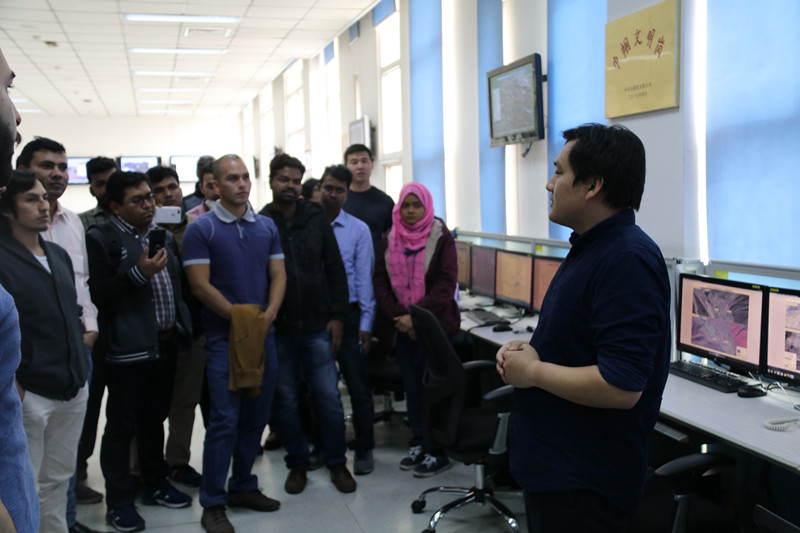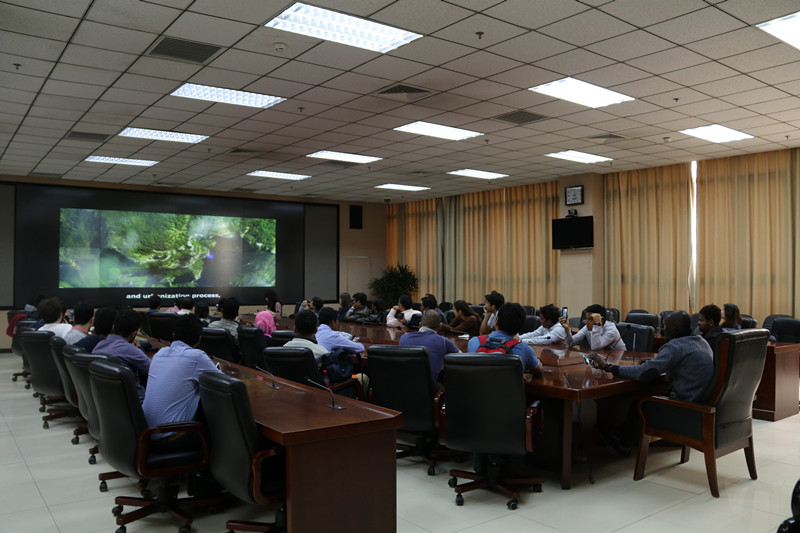On March 28th, the Centre
organized a technical visit to National Disaster
Reduction Center of China (NDRCC).
Participants from 2017 MASTA & DOCSTA Program enjoyed this technical visit,
and wrote about this meaningful and interesting visit. We select one journal article and some
excerpts from the participants.
Excellent Excerpts:
CRISTIANO
STRIEDER from Brazil wrote in his article: “During the visit, I saw the
installations of NDRCC and learned about the operations conducted there. It was
interesting to visit NDRCC and observe the whole idea of disaster reduction
implement, an advantage just a few countries can afford. It was good to hear in
one of the talks that China had agreements with neighbor countries to share the
benefits that NDRCC provides. Participating in this technical visit made me
realize the importance of such an institution and perceive how it was linked
with space technology. I am from Brazil, a country lucky enough not to have
hurricanes, tornadoes, volcanic eruptions, earthquakes and tsunamis, and the
need for such institutions are not immediately noticed by many people. But I
believe it is a urgent issue to a disaster reduction centre integrated with space
technologies, as it is of great significance and would be beneficial to any
country.”
MD. MASUDUL HAQUE from Bangladesh said: “The Interesting/meaningful things I found of NDRCC is its variable
functions, like integrating, processing and sharing the disaster information;
providing technical service, application research and training; helping the
government to make decision for disaster reduction and relief; and
international cooperation on disaster reduction.
The responsibilities of NDRCC I noticed
during the visit were to develop and implement the national plan on disaster
reduction, to develop the guidelines and policies as well as activities, to
propel international exchange and cooperation in disaster reduction, to
supervise the relevant work in the provincial levels, and to organize and coordinate
the disaster relief work.”
ELYKA ABELLO RODRIGUEZ from Venezuela wrote: “
It was a great technical visit and made me think of the application of my
research field, Micro-satellite technology. Satellite project is done to solve people’s
need, meaning to provide a service to the user. The user defines the mission of
the satellite depending on its the application. NDRCC is also a satellite
technology application center, even if it is not directly related to the Micro-satellite Technology courses. It is important to
know the different applications that a satellite can provide, because
applications define the requirement for satellite design. ”
Journal Article from One Thai Participant --CHITSUTTI PATSHARAWADEE
On
28th March, 2018, We, students in 2017 MASTA Program, got an
opportunity to visit National Disaster Reduction Center of China (NDRCC) under
Ministry of Civil Affairs of China. NDRCC is one of the leading scientific and
technical centers to provide the support for government in addressing
disaster-related issues by focusing on the whole cycle of disaster management,
including a national disaster database which local civil affairs departments
access to enter details about the disaster. NDRCC has built up its unique
capacities by applying leading-edge technologies and other software resources
to conduct the work in disaster preparedness, disaster reduction, emergency
response, post-disaster rehabilitation and reconstruction.
In
the center, the experts of NDRCC guided us to visit some working areas such as
Comprehensive Analysis and Estimation Section, Airborne Remote Sensing Section,
Satellite Remote Sensing Section and Disaster Assessment Section. The experts
gave an overall introduction, showed how to use National Natural Disaster
Report System to get the data and images, and explained some disaster
information which occurred in China. They mentioned eight (8) major disasters
including Drought, Flood, Earthquake, Snow, Forest Fire and Tropical Storm in
the introduction. For Disaster Management, NDRCC works on six (6) parts
preparedness, disaster reduction, reconstruction, disaster incident, relief and
recovery.

The
interesting things I found of this technical visit were in Disaster Monitoring
part. The NDRCC monitors in routine with using satellites HJ-1, GF Series and
commercial cooperation satellite such as FY, MODIS, NOAA to check local
disaster and provides three (3) kinds of Routine Monitoring products disaster
element (e.g. vegetarian, water), risk area (drought, flood), recovery and reconstruction.
In addition, these products are utilized in Land Cover and Land Use,
Residential Distribution, Vegetation Distribution and Growth condition. In case
of Emergency Monitoring, they monitors 24 hrs to get the 1st post disaster RS
data with five (5) kinds of disaster monitoring and loss assessment products such as Reference Mapping, Delineation Mapping, Damage
assessment Mapping, Secondary Disaster Monitoring and Disaster Relief
Monitoring.
Then,
Dr. Liu Ming gave a lecture titled “Space-based Technology Application for
Disaster Management in China”, giving a detailed introduction about disaster
characteristics and management in China, space-based technology in disaster
monitoring and assessment, etc. He mentioned that China joined the
International Charter Space and Major Disaster formally on May 24, 2007 and
improved its remote sensing data acquisition capacity. NDRCC acted as the
Authorized User (AU) and Project Manager (PM) of the mechanism. He also
introduced Remote Sensing Data, Disaster Monitoring and other professional and
technical knowledge.


Finally,
to visit the NDRCC, I am grateful and impressed with the efficient use of
technology in China. In my opinion, this center is the best center for learning
in disaster management and reduction because it serves disaster information
sharing, technical services and plans for disaster reduction, coordinating
major disaster activities. Its main specified functions can be managed disaster
effectively to assess and analyze the occurrence and development of major
disasters, and provide services on forecast, assessment and supporting disaster
reduction decisions and information, collect and analyze disaster reduction
information both at home and abroad for information sharing and also provide
technical assistance and supporting decisions for major emergency relief work.
Moreover, NDRCC gives guidance to local governments in their disaster reduction
work which lead in promoting international exchanges and cooperation.

